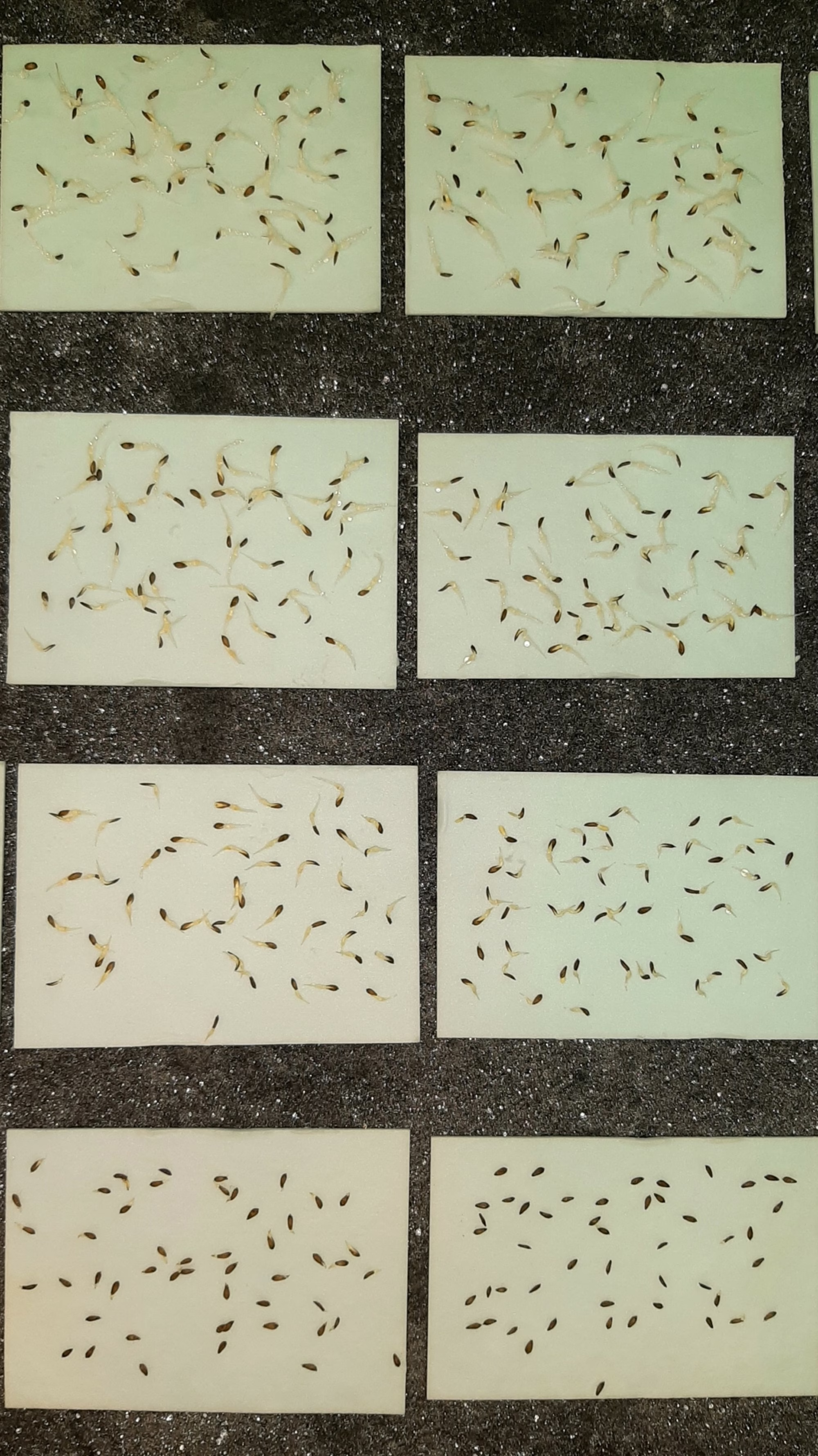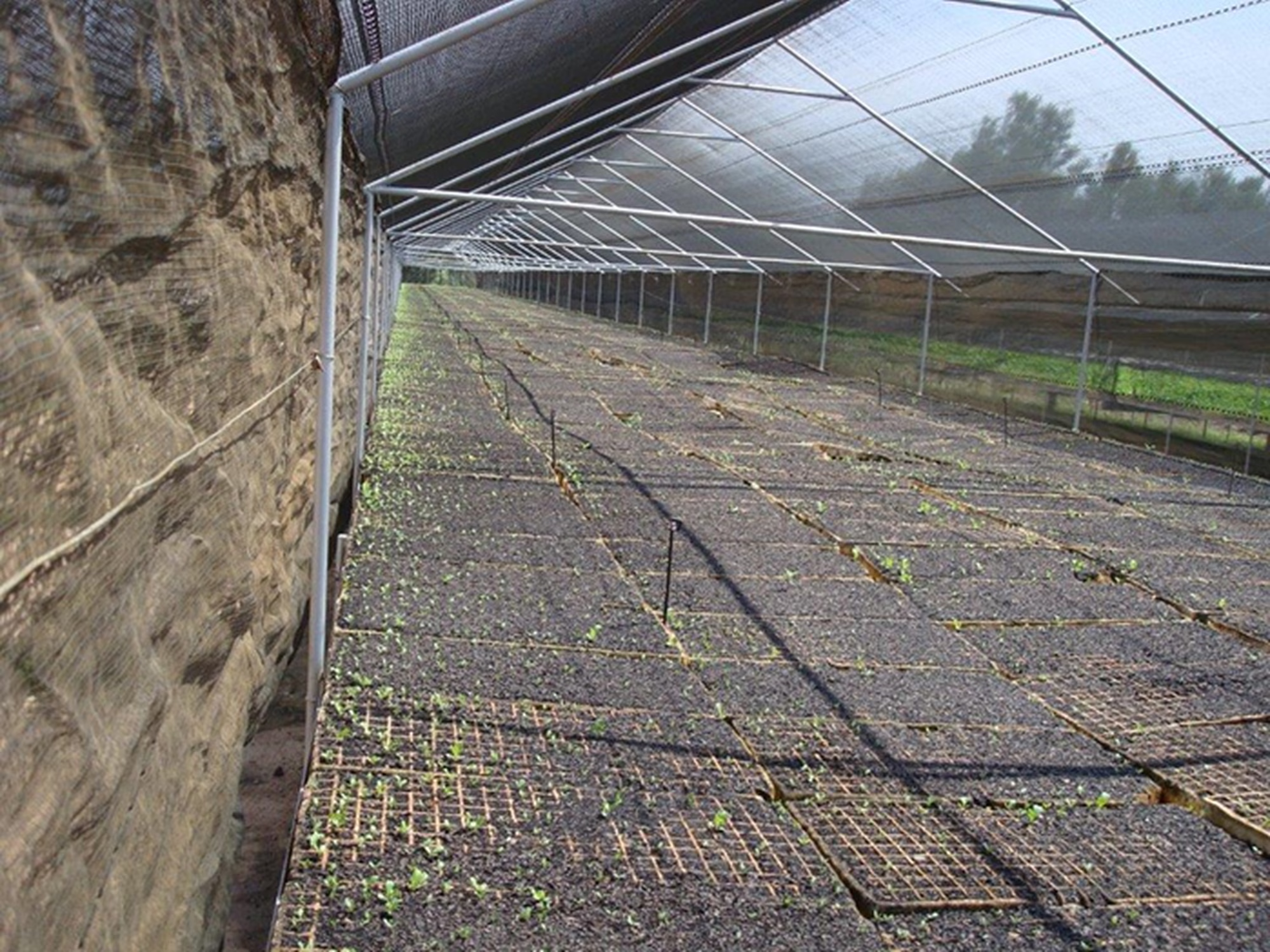
Two seed lots (left and right) germinated at 4 different temperatures (24, 27, 30 and 33°C top to bottom).
Lettuce is essentially a cool weather crop, making it the ideal crop for the winter season. It germinates at a temperature range of between 15ºC and 20ºC, and the ideal temperature for growth is also between 15ºC and 20ºC.
Producing lettuce in summer can be a challenge, as the disease pressure is higher than in winter and the heat may induce bolting in certain varieties. However, STARKE AYRES has a range of varieties adapted for the various seasonal slots.
One of the main concerns when cultivating lettuce in warmer conditions is thermodormancy, as germination may be compromised at temperatures above 25°C. Lettuce seed may enter a state of secondary dormancy and consequently fail to germinate at high temperatures. Secondary dormancy occurs when seed is exposed to high temperatures while it imbibes (absorbs) water. Thermodormancy may be induced at temperatures above 25°C and some varieties are more susceptible than others. For example, triple red lettuce varieties seem to be more affected by this phenomenon than others.
Several interventions have been initiated to circumvent thermodormancy and they include the following:
1. Priming: seed priming is probably one of the most effective ways to overcome thermodormancy;
2. Germinating in a germination room at correct optimal temperatures can also overcome the problem. Using a cold room and/or even an air-conditioned germination room with an average temperature of between 15ºC and 20ºC would be ideal;
3. Pre-watering soil: the soil cools as the water evaporates;
4. Planting early in the morning as soil temperatures are lowest at this time;
5. If possible, keeping the soil “dark damp” for about the first six hours;
6. Pre-chilling trays or water with chilled water;
7. Using small spacers to space trays from each other when stacked on a pallet to allow airflow over the cavities.
STARKE AYRES supplies primed seed of most cultivars to help reduce the effect of thermodormancy. Primed seed must, at all times, be kept in a refrigerator and used immediately after purchase as it has a very limited shelf life.
Contact our customer care desk or your closest sales representative to enquire about our primed and pelleted and primed and encrusted range of lettuce seeds available for each seasonal slot.

Seeds closer to the edge of the net house germinate due to cool airflow while the rest become dormant due to high temperatures, a familiar pattern of thermodormancy.